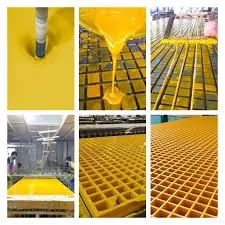
-
 Afrikaans
Afrikaans -
 Albanian
Albanian -
 Amharic
Amharic -
 Arabic
Arabic -
 Armenian
Armenian -
 Azerbaijani
Azerbaijani -
 Basque
Basque -
 Belarusian
Belarusian -
 Bengali
Bengali -
 Bosnian
Bosnian -
 Bulgarian
Bulgarian -
 Catalan
Catalan -
 Cebuano
Cebuano -
 China
China -
 China (Taiwan)
China (Taiwan) -
 Corsican
Corsican -
 Croatian
Croatian -
 Czech
Czech -
 Danish
Danish -
 Dutch
Dutch -
 English
English -
 Esperanto
Esperanto -
 Estonian
Estonian -
 Finnish
Finnish -
 French
French -
 Frisian
Frisian -
 Galician
Galician -
 Georgian
Georgian -
 German
German -
 Greek
Greek -
 Gujarati
Gujarati -
 Haitian Creole
Haitian Creole -
 hausa
hausa -
 hawaiian
hawaiian -
 Hebrew
Hebrew -
 Hindi
Hindi -
 Miao
Miao -
 Hungarian
Hungarian -
 Icelandic
Icelandic -
 igbo
igbo -
 Indonesian
Indonesian -
 irish
irish -
 Italian
Italian -
 Japanese
Japanese -
 Javanese
Javanese -
 Kannada
Kannada -
 kazakh
kazakh -
 Khmer
Khmer -
 Rwandese
Rwandese -
 Korean
Korean -
 Kurdish
Kurdish -
 Kyrgyz
Kyrgyz -
 Lao
Lao -
 Latin
Latin -
 Latvian
Latvian -
 Lithuanian
Lithuanian -
 Luxembourgish
Luxembourgish -
 Macedonian
Macedonian -
 Malgashi
Malgashi -
 Malay
Malay -
 Malayalam
Malayalam -
 Maltese
Maltese -
 Maori
Maori -
 Marathi
Marathi -
 Mongolian
Mongolian -
 Myanmar
Myanmar -
 Nepali
Nepali -
 Norwegian
Norwegian -
 Norwegian
Norwegian -
 Occitan
Occitan -
 Pashto
Pashto -
 Persian
Persian -
 Polish
Polish -
 Portuguese
Portuguese -
 Punjabi
Punjabi -
 Romanian
Romanian -
 Russian
Russian -
 Samoan
Samoan -
 Scottish Gaelic
Scottish Gaelic -
 Serbian
Serbian -
 Sesotho
Sesotho -
 Shona
Shona -
 Sindhi
Sindhi -
 Sinhala
Sinhala -
 Slovak
Slovak -
 Slovenian
Slovenian -
 Somali
Somali -
 Spanish
Spanish -
 Sundanese
Sundanese -
 Swahili
Swahili -
 Swedish
Swedish -
 Tagalog
Tagalog -
 Tajik
Tajik -
 Tamil
Tamil -
 Tatar
Tatar -
 Telugu
Telugu -
 Thai
Thai -
 Turkish
Turkish -
 Turkmen
Turkmen -
 Ukrainian
Ukrainian -
 Urdu
Urdu -
 Uighur
Uighur -
 Uzbek
Uzbek -
 Vietnamese
Vietnamese -
 Welsh
Welsh -
 Bantu
Bantu -
 Yiddish
Yiddish -
 Yoruba
Yoruba -
 Zulu
Zulu
fiberglass for steel smelting plant.
The Role of Fiberglass in Steel Smelting Plants
Steel smelting is an essential industrial process that transforms raw iron ore into steel by removing impurities through a high-temperature melting process. As the demand for steel continues to rise in various sectors, including construction, automotive, and manufacturing, the need for enhancing the efficiency and safety of steel smelting plants becomes increasingly critical. One material that has emerged as a valuable asset in this domain is fiberglass.
Fiberglass, composed of fine fibers of glass, offers an array of properties that make it particularly suited for applications in steel smelting plants. One of its most notable advantages is its resistance to heat and corrosion. Steel smelting involves temperatures that often exceed 1,500 degrees Celsius (2,732 degrees Fahrenheit), creating intense conditions that can lead to the wear and tear of traditional materials. Fiberglass, on the other hand, maintains its structural integrity even at elevated temperatures, making it an ideal choice for linings and insulative applications.
The Role of Fiberglass in Steel Smelting Plants
Moreover, the lightweight nature of fiberglass makes it easier to handle and install compared to traditional materials like metal or brick. This characteristic contributes to a reduction in labor costs and time during the construction and maintenance of smelting facilities. Additionally, fiberglass components can be molded into intricate shapes that are often required in specialized applications, further enhancing the design flexibility in furnace construction.
fiberglass for steel smelting plant.

Safety is another paramount concern in steel smelting operations. The extreme conditions present pose risks not only to the plant equipment but also to workers. The use of fiberglass can enhance safety protocols within steel smelting plants. Its non-conductive properties reduce the risk of electrical hazards, while its corrosion resistance minimizes the chances of harmful leaks or material degradation that could pose dangers to personnel. Furthermore, using fiberglass can significantly decrease the risk of fire due to its high melting point and overall stability under high temperatures.
The sustainability of materials used in industrial processes is garnering more attention, and fiberglass aligns well with these environmental initiatives. Many fiberglass products are composed of recycled glass fibers, contributing to a circular economy and reducing the overall carbon footprint of steel production. Additionally, the extended lifespan of fiberglass components means less frequent replacements, which translates to lower waste generation and fewer resource requirements for manufacturing new parts.
However, the integration of fiberglass into steel smelting operations is not without challenges. The initial costs of fiberglass products may be higher than traditional materials. Still, the long-term benefits derived from reduced maintenance, enhanced energy efficiency, and improved safety conditions often outweigh these costs, making fiberglass a worthy investment for smelting facilities.
In conclusion, the incorporation of fiberglass in steel smelting plants presents a multifaceted solution that addresses the pressing demands for higher efficiency, safety, and sustainability in the industry. As steel production continues to evolve, the role of innovative materials like fiberglass is set to become increasingly significant. By embracing these advancements, steel smelting plants can not only meet current production challenges but also pave the way for a more sustainable future in steel manufacturing.









